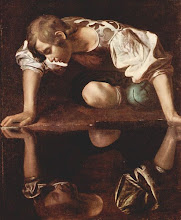 The Book of Durrow is an illuminated manuscript of the Latin translation of the four gospels of the New Testament, most likely written in the 7th century AD at the monastery at Durrow in Ireland founded by St. Columba. It is now in the library of Trinity College Dublin. Although most people probably think of the artistic style as "Celtic", it is more properly known as "insular" or "Hiberno-Saxon" since the art of the Celtic and Anglo-Saxon peoples of the British Isles at this time shared many features and if the origin of a manuscript is unknown, it is difficult to say just from its appearance whether it is a Celtic or Anglo-Saxon production.
The Book of Durrow is an illuminated manuscript of the Latin translation of the four gospels of the New Testament, most likely written in the 7th century AD at the monastery at Durrow in Ireland founded by St. Columba. It is now in the library of Trinity College Dublin. Although most people probably think of the artistic style as "Celtic", it is more properly known as "insular" or "Hiberno-Saxon" since the art of the Celtic and Anglo-Saxon peoples of the British Isles at this time shared many features and if the origin of a manuscript is unknown, it is difficult to say just from its appearance whether it is a Celtic or Anglo-Saxon production.Here we have one illustrated description of the Book of Durrow, placing it in a Celtic context, while here another article discusses it as part of a series of pages on Anglo-Saxon manuscripts. This entry from a blog on Early Medieval Art discusses the Book of Durrow but would be more useful with illustrations.
Since we are now in Advent, this page from the Book of Durrow has the beginning of Matthew's version of the Christmas story.

One of the Book of Durrow's famous carpet pages:

Each gospel is accompanied by a symbol of the evangelist. Unusually, the Book of Durrow symbolises John with a lion:

The small picture at the top is the beginning of Mark's gospel. For a double page spread with a much larger version and its accompanying carpet page, go here. (all pictures in this post are from wikicommons and are in the public domain)





No comments:
Post a Comment